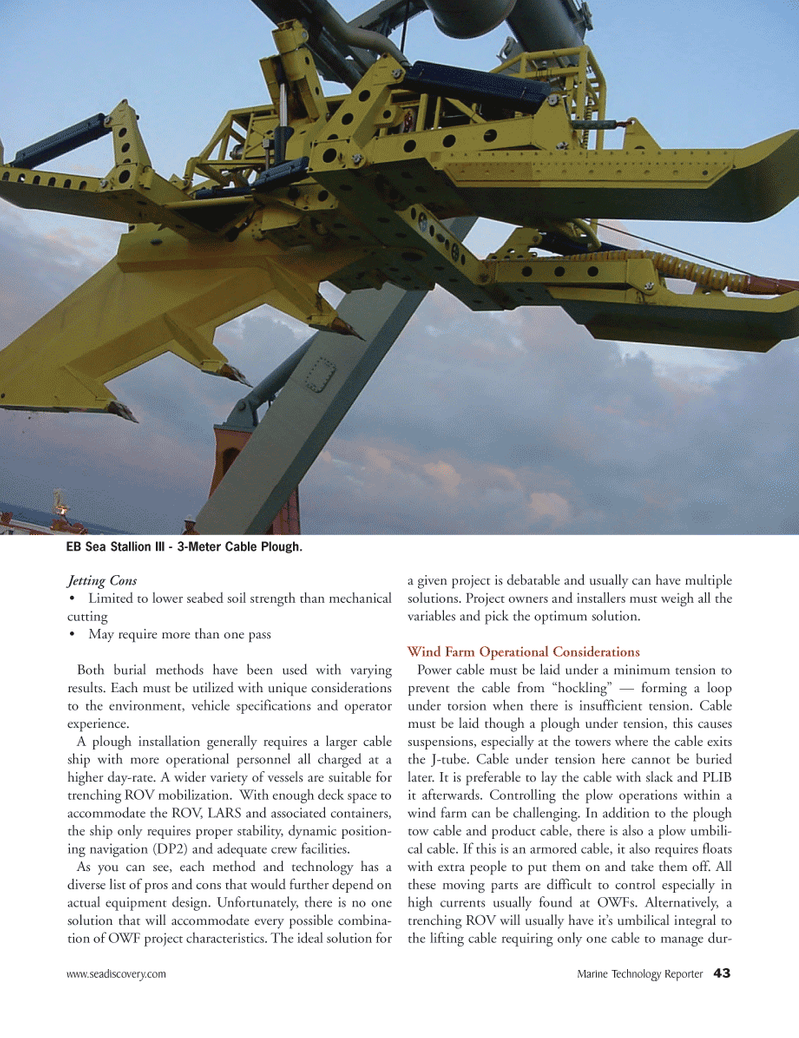
Page 43: of Marine Technology Magazine (October 2011)
Ocean Engineering & Design
Read this page in Pdf, Flash or Html5 edition of October 2011 Marine Technology Magazine
www.seadiscovery.com Marine Technology Reporter 43Jetting Cons Limited to lower seabed soil strength than mechanical cuttingMay require more than one pass Both burial methods have been used with varying results. Each must be utilized with unique considerations to the environment, vehicle specifications and operator experience. A plough installation generally requires a larger cable ship with more operational personnel all charged at a higher day-rate. A wider variety of vessels are suitable for trenching ROV mobilization. With enough deck space to accommodate the ROV, LARS and associated containers, the ship only requires proper stability, dynamic position- ing navigation (DP2) and adequate crew facilities. As you can see, each method and technology has a diverse list of pros and cons that would further depend on actual equipment design. Unfortunately, there is no one solution that will accommodate every possible combina- tion of OWF project characteristics. The ideal solution for a given project is debatable and usually can have multiple solutions. Project owners and installers must weigh all the variables and pick the optimum solution. Wind Farm Operational Considerations Power cable must be laid under a minimum tension to prevent the cable from ?hockling? ? forming a loop under torsion when there is insufficient tension. Cable must be laid though a plough under tension, this causessuspensions, especially at the towers where the cable exits the J-tube. Cable under tension here cannot be buried later. It is preferable to lay the cable with slack and PLIB it afterwards. Controlling the plow operations within a wind farm can be challenging. In addition to the plough tow cable and product cable, there is also a plow umbili- cal cable. If this is an armored cable, it also requires floats with extra people to put them on and take them off. All these moving parts are difficult to control especially in high currents usually found at OWFs. Alternatively, a trenching ROV will usually have it?s umbilical integral to the lifting cable requiring only one cable to manage dur- EB Sea Stallion III - 3-Meter Cable Plough.MTR#8 (34-49):MTR Layouts 10/10/2011 11:37 AM Page 43

 42
42

 44
44
